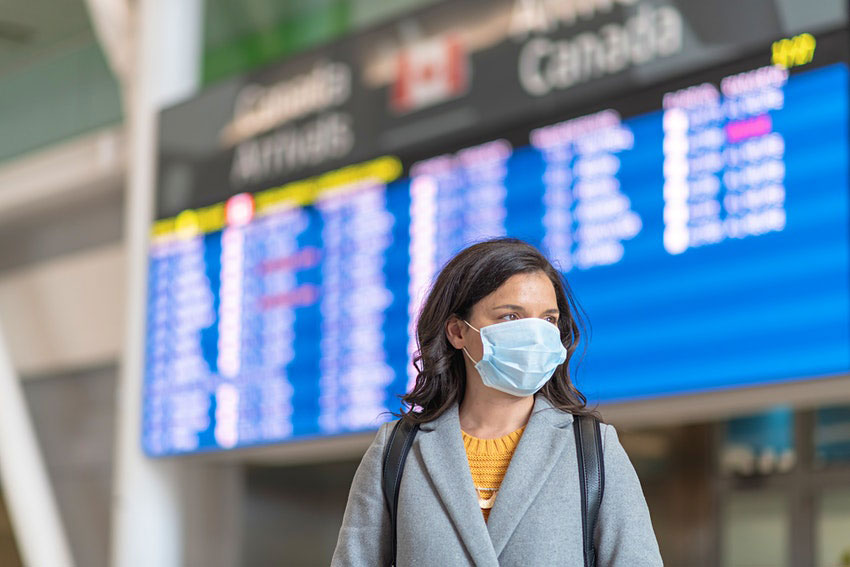
US Travel Advisories: What you need to know about traveling to Level 4 destinations
TripFalcon August 18, 2021
Last Update: 2021-08-19 11:55:05The Department of State and the Centers for Disease Control and Prevention (CDC) have updated their travel advisories several times in recent weeks, moving more countries to the Level-4 alert, including France, Iceland, Israel, Thailand, Turkey, Ireland and Aruba.
The advisories aim to inform US residents about risks associated with traveling overseas, so that people can make better-informed decisions about travel and enjoy hassle-free trips. If you plan to travel soon, here's what you need to know about the latest travel advisory guidelines.
What is a travel advisory?
The ongoing risks associated with COVID-19, particularly as new variants emerge, present challenges and uncertainties for travel. To make the experience a little less confusing, the Department of State has aligned its security travel advisories with the CDC's science-based Travel Health Notices to warn travelers about dangers and COVID-19 threats overseas.
Level 4 travel advisory
Level 4 is the highest alert. Countries who register more than 500 new cases of COVID-19 over the past 28 days per 100,000 population are designated to the CDC's Level-4 list. Under CDC guidelines, people are asked to "avoid travel" to Level 4 destinations but if they must travel, they should be fully vaccinated.
The Department of State takes this information into account, also looking at factors such as political instability, natural disasters and the threat of terrorism or violent crime. "[Level 4] is the highest advisory level due to greater likelihood of life-threatening risks," the Department explains. In the context of COVID-19, Americans are urged to avoid travel to these places due to increased infection rates and COVID-19 variants.

France was recently designated Level 4 ©kan_khampanya/Shutterstock.com
What countries were recently designated Level 4?
France
France is in the middle of a fourth wave of the pandemic with rising infection numbers due to the highly-transmissible Delta variant. While the US government urges Americans to avoid travel to France, they can visit provided they are vaccinated or have tested negative for COVID-19, as per France's entry rules. The government has also introduced a health pass for individuals to show in public places, proving they have been vaccinated or have recently tested negative for COVID-19.
Greece
Greece was one of the first European countries to open to American tourists this summer but it has seen an increase in coronavirus case numbers in recent weeks, particularly on the islands of Mykonos, Santorini, Paros, Ios, Zakynthos and Naxos. Additional police officers have been deployed on Mykonos and Ios to ensure that nightspots are complying with enhanced health and safety measures, but the Guardian reports that the islands could potentially face further COVID restrictions due to rising infection rates among people aged 20 to 30. As per Greece's entry rules, people traveling to Greece from the US must present a negative test before arrival, if they are not fully vaccinated.
Costa Rica
The Delta variant is also an issue in Costa Rica, with the country reporting 1,669 new infections on average each day, as of August 17. According to Reuters, that's 54% of the peak of the pandemic. Americans are urged to avoid travel there by their own government but Costa Rica is welcoming US visitors who are fully vaccinated without restrictions. Those who are unvaccinated must have travel insurance when visiting, as per Costa Rica's entry rules.
Iceland
Iceland had demonstrated relative success in containing the virus and opened its borders to vaccinated tourists in summer, but the Delta variant has increasde infection rates across the country. Americans who wish to visit Iceland must be fully vaccinated and present a negative COVID-19 test result or face quarantine, as per Iceland's entry rules.
Other destinations at Level 4 include Ireland, the Netherlands, Portugal, Spain, the UK, Panama, Colombia, Cuba, Nicaragua, Israel, Thailand, Turkey, Zimbabwe, Nepal, Cyprus, Brazil, Aruba, French Polynesia and more.

Mexico remains a Level 3 country under CDC and State Department guidelines ©Irina Klyuchnikova/Shutterstock
Level 3 advisory
The CDC advises unvaccinated Americans to avoid nonessential travel to Level 3 destinations, where risks associated with COVID-19 remain high. The Department of State urges American to reconsider travel to these places. Some popular destinations designated Level 3 include Italy, Peru, the Bahamas, Barbados, Belize, Chile, Croatia, Egypt, Sweden, Mexico, Switzerland, Japan, New Zealand and Australia.
Level 2 advisory
Level 2 places are considered "COVID-19 moderate" destinations by the CDC. When traveling to these places people are asked to "practice enhanced precautions". The CDC also urges unvaccinated people who are at increased risk for severe illness from COVID-19 to avoid nonessential travel to Level 2 destinations. Some countries currently at Level 2 include Canada, Singapore, Ghana, South Korea and—most recently—India, which was lowered from Level 4 to Level 2 after scaling back COVID-19 infection numbers following its peak in summer.
Level 1 advisory
Level 1 destinations are considered "low-risk" countries. People traveling to these places are asked to "exercise normal precautions" by the Department of State. Some countries at Level 1 include Bermuda, Grenada, Djibouti and Romania.

Travel advisories are intended to help people make better-informed decisions about travel ©Getty Images
Should I cancel my trip to a Level 4 country?
The answer is up to you. Travel advisories are guidelines, not rules. You are still permitted to travel to these places but if you choose to go a country the government is advising you to avoid, you do so at your own risk. In some extreme cases—that is countries where there is civil unrest, widespread violence and political instability—the Department warns that some consular services may not be available to you and advises travelers to "always have a contingency plan for emergency situations".
If I do travel, do I need to quarantine?
It depends on your destination. These travel advisories and travel health notices are set out by the US government and the CDC, not the governments of the individual countries. For example, Spain is at Level 4 but the Spanish government is permitting Americans to travel there without quarantine and testing requirements.
Will my travel insurance cover me in a Level 4 country?
It depends on your plan and provider. We asked several travel insurance experts for information on the impact travel advisories have on your insurance.
How often do these advisories change?
The Department of State confirms it reviews and updates travel advisories "as needed, based on security and safety information."
What are the requirements for returning to the US?
Currently, all airline passengers traveling to the US aged two years and older must provide either a negative COVID-19 test taken within 72 hours of departure even if they are fully vaccinated, or provide an official health document that proves they have recovered from COVID-19 within the last three months.
The Centers for Disease Control (CDC) recommends all unvaccinated arrivals quarantine for at least seven days upon arrival, and to take a COVID-19 test three to five days after arrival. Fully vaccinated travelers with an FDA- or WHO-approved vaccine don't have to quarantine but they are advised to take a COVID-19 test within three to five days of arrival too.
Anyone considering heading abroad should read the entire travel advisory for their destination at Travel.State.gov; in addition to the destination's border restrictions and entry requirements—and stay up-to-date on local public health guidelines.

